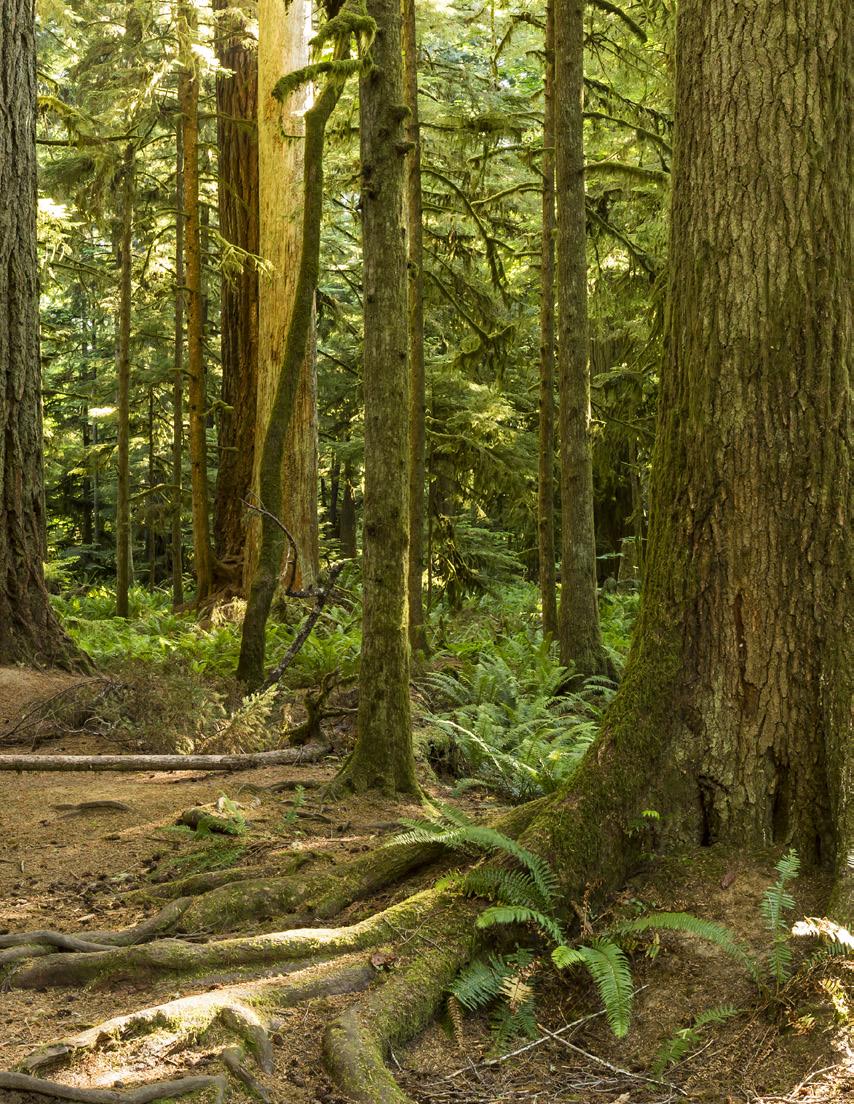
3 minute read
GrowingIndigenous forest gardens
BC’s forests were once extensively managed for long-term sustainability and subsistence
Growing up in Greater Vancouver, Jennifer Grenz (BSc Agro-Ecology’04, PhD’20), who is of mixed Nlaka‘pamux ancestry from the Lytton First Nation, often relished in family trips to BC’s Southern Interior, Squamish-Lillooet and Coast Mountain regions. There, she would run through the semi-arid hills and valleys with her cousins, trapsing through stands of silver fir, white spruce, western larch, paper birch, trembling aspen and Rocky Mountain juniper.
Advertisement
Her deep roots in BC and passion for nature later led Jennifer down various paths. Following her undergraduate degree at UBC in agroecology, she launched an ecological restoration consulting company (Greener This Side), completed a PhD in Integrated Studies in Land and Food Systems at UBC and ran as the North Island-Powell River Liberal candidate.
In January 2022, Jennifer accepted a joint appointment with UBC Forestry and UBC Land and Food Systems as an Asst. Prof. where her research and teaching pursuits will build on her experience in invasive species management, ecological restoration, science communication and Indigenous ecology. What drives her work, she says, is a desire to better understand and apply an Indigenous world view to the management of landscapes.
“I work a lot within Indigenous forest gardens,” she explains. “When you look at the species compositions in some areas in a legacy state that reflects Indigenous forest management practices, you find that they don’t look the same as a typical forest.”
Prior to colonization, Indigenous peoples managed their lands extensively, placing certain plant species at various intensities in different locations to provide food and medicines on a broad scale, Jennifer explains. Forest soil was fertilized with fish bones, similar to how gardeners use fish emulsion to fertilize their backyard plants. Fire was used to conduct quick burns to open up the forest canopy, sweeten the soil (improve fertility) and remove dry woody debris that could ignite into a major blaze.
Many of these practices are being reclaimed and adapted in the modern context by Indigenous communities, says Jennifer, yet few are currently integrated into non-Indigenous-led, large- and small-scale forestry operations, despite their potential to improve climate resiliency.
Indigenous forest gardening was developed and passed down over millennia, which accounts for the sophistication and ingenuity of forest garden practices.
“The soil profile in Indigenous managed forest gardens can be entirely different than neighbouring areas,” says Jennifer.
“I have seen time and again throughout my career situations similar to the one in which salmonberry thrived in nearby Indigenous gardens, but, when a stand newly eradicated of invasive Japanese knotweed was planted with salmonberry, the plants died,” notes Jennifer. “The soils in non-Indigenous gardens are so different that the same result is not yielded.”
Jennifer has set her sights firmly on transferring knowledge of Indigenous ecology, food systems, forest gardens and invasive species management in collaboration with Indigenous communities and governments, as well as research into the soil microbiome and plant-soil interactions. This work, she asserts, can contribute to the muchneeded paradigm shift towards relational, sustainable forest decision-making that honours place-based knowledges, community needs and values. These concepts will also be featured in her forthcoming book, Medicine wheel for the planet: Healing the land by reclaiming an Indigenous ecology, due to be released by Knopf Penguin Random House in 2024.
“We are dealing with many complex issues from the legacy of invasive plants on the land and a lack of understanding of and relationship with the land and how to steward and tend to plants,” says Jennifer.

While quick burns may work in remote rural areas, they may not be possible near towns and cities. This, Jennifer says, raises the question of what can be done instead. The answer is something she plans to pursue over the coming years.
“Today, we are in need of a reapplication of the food systems lens that guided the land management practices of Indigenous peoples who engineered forest species composition to serve our needs, as well as preserve the long-term health of the forest,” says Jennifer. “This involves a recognition that humans are an essential part of the relationships that allow plants, trees and forest ecosystems to thrive, and need to play a role in the purposeful shaping of lands and waters.”
Indigenous ecology, she says, has this concept baked into its core.
Learn more about Jennifer and her upcoming book at: forestry.ubc.ca/faculty-profile/jennifer-grenz










